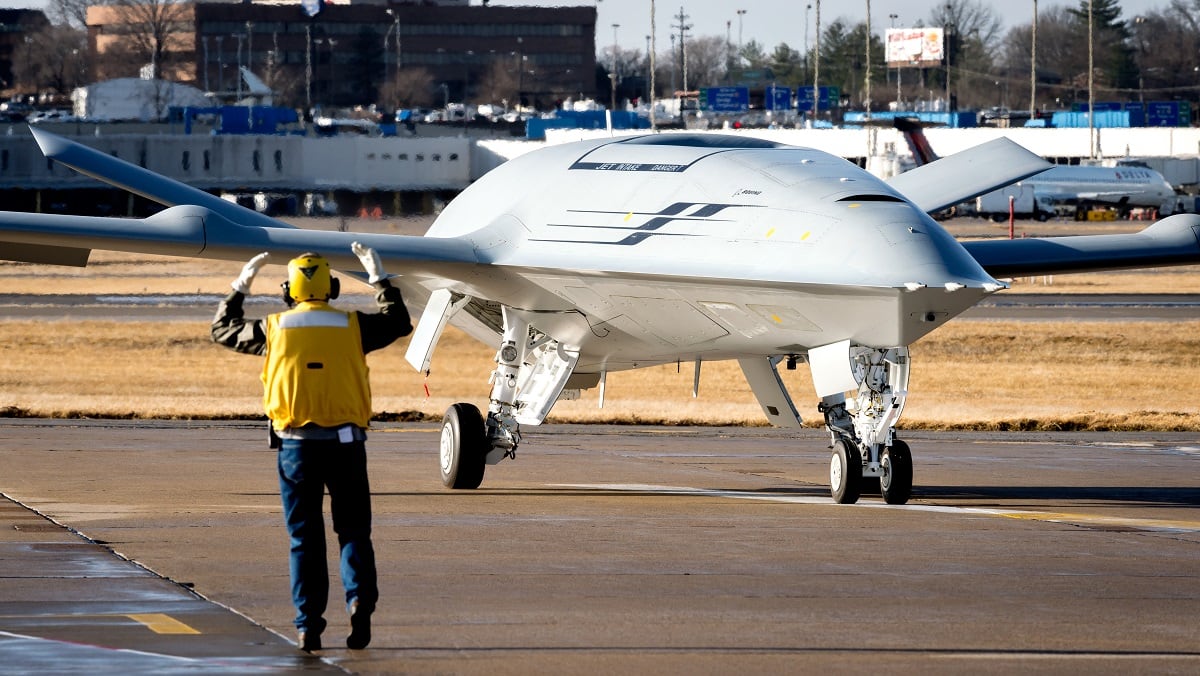During a Thursday ceremony at the Washington Navy Yard, Adm. John Richardson transferred the highest uniformed office in the sea service to Adm. Michael Gilday, who was deep-selected from the three-star ranks to become the next chief of naval operations.
The shift in power from Richardson, a career submariner, to a surface warfare officer who understands cyberwarfare comes during an era marked by a return to great power competition with rising nations such as China and Russia.
In brief remarks, Gilday promised to tackle this new age by breaking free from old modes of thinking.
“We will question our assumptions,” Gilday said. “We will think differently about the competition we are now in. We will be the Navy the nation needs now, and we will build the Navy the nation needs to fight and win in the future, always guided by our core values of honor, courage, and commitment.”
Gilday is the first SWO at the helm of the Navy since Adm. Garry Roughead turned over to Adm. Johnathan Greenert, also a submariner, in 2011.
Gilday previously directed the Navy’s Cyber Command before becoming the director of the Joint Staff.
RELATED

Richardson departs after a difficult four years at the top of the Navy, a tour in the Pentagon that was punctuated by twin warship collisions in 2017 that killed 17 sailors in the Western Pacific and ongoing counter-terrorism operations in the Middle East, Africa and Afghanistan.
But he also arrived in office with the drive to confront the forces of Beijing and Moscow long before they became talking points in the other services.
Richardson sought to refocus the Navy on fighting and winning major conflicts and sought to lighten the budgetary and operational strain on the force.
For a man who entered the Navy during an era of competition with the former Soviet Union, his tenure as CNO saw a revitalized focus on Cold War haunts.
Last October, for example, the Harry S. Truman Carrier Strike Group operated in the Arctic Circle for the first time in two decades.
But the spotlight usually fell on Asia, where the Navy’s forward-deployed forces watch an increasingly prosperous and powerful China vie for influence across the Pacific Rim.
In the wake of the collisions involving commercial vessels and the guided-missile destroyers Fitzgerald and John S. McCain, Richardson ordered a comprehensive review designed to change the culture in the 7th Fleet and end the crushing operational demands placed on crews by U.S. Indo-Pacific Command and the Pacific Fleet while bolstering readiness to prep for a potential war at sea.
RELATED

Gilday will now confront the same challenges Richardson faced, including the Pentagon’s push to build a 355-ship Navy, expand the unmanned carrier-based drone fleet and then produce a new fleet of Columbia-class submarines and frigates.
Gilday praised Richardson’s work as CNO and the direction he had set his Navy to sail.
“I believe our Navy’s strategic direction is rock solid and that our Navy is in great shape,” Gilday said. “We are recruiting and retaining a high quality force. We are providing well trained, combat-ready forces forward, around the globe. We are modernizing our Navy at a scope and pace not seen in decades.
"I can say all that, in large part, is due to the leadership of our 31st CNO.”
David B. Larter was the naval warfare reporter for Defense News.







